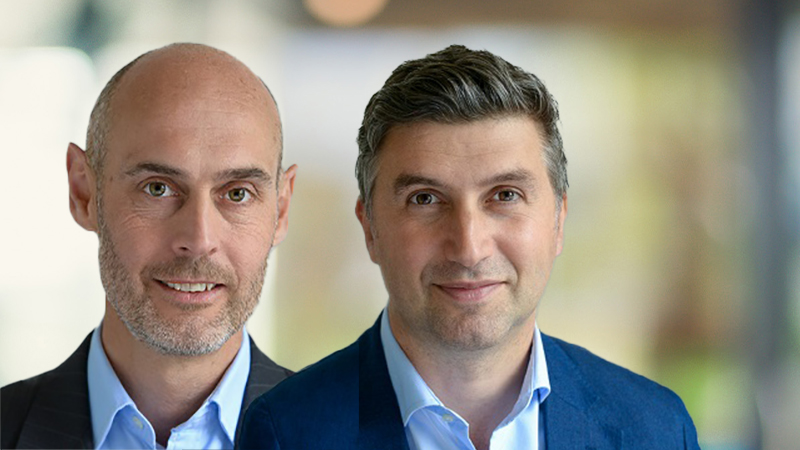While the Magnificent Seven has been the poster child for success in new-age businesses over the past few years, Amati’s Mikhail Zverev and Graeme Bencke have pressed beyond the group to what they call “innovation frontiers”, ranging from laser technology to bio-manufacturing via cells from a hamster ovary.
Zverev and Bencke, who come from backgrounds in semiconductors and aerospace, say their backgrounds have let them go further “down the rabbit hole” than some investors may be comfortable with, attending trade shows and using the networks of local businesses to discover unique investment opportunities.
“It helps sometimes, I’m sure, but also sometimes it hurts. One of the biggest dangers of investing in innovation, as far as we’re concerned, is what we call falling in love with science,” Zverev said.
“These are fascinating subjects. Being able to understand it and the thrill of having conversations with people who are at the leading end of it can get the better of you. Although we have various technical backgrounds, all of us have pretty run of the mill business, accounting, and finance degrees that serve to remind us, along with 20-something years of experience, that companies don’t pursue innovation for the love of science, they pursue innovation to deepen the competitive moat and accelerate growth.”
The rise of biomanufacturing
In the healthcare space, biologic drugs, or drugs created from the use of living organisms, have caught the eyes of the investing duo. Biologic drugs are currently being used in treatments for diseases such as rheumatoid arthritis, Crohn’s disease, multiple sclerosis and cervical cancer.
“That transition from small molecule to biologics is similar to transitioning from cracking your crude oil into petrol in a refinery to brewing beer, making yogurt, making cheese,” Zverev said.
“It’s a bio manufacturing process. In practice, that means you have these super sterile bio reactors, you populate them with genetically modified cell lines. Most modern drugs are made with CHO cells, which stands for Chinese hamster ovary. It’s the cell that is easiest to keep alive and the easiest to manipulate, because it’s very robust, which dates back to some unlucky hamster a few years ago when it was first developed.”
Often, regulatory decisions by the MHRA or FDA in the US can cause roadblocks as companies attempt to put drugs on the market. However, Zverev noted that the regulation can also make for some insurance in the investment. One of the companies the duo invests in, Danaher, is what they call an ‘enabler’ for biopharmaceutical manufacturers, providing technology for the products.
“[The regulation] becomes a moat. The regulatory regime around it is so robust, once drugs go through this process, you can’t change it. So your business is locked in,” Zverev said.
Bencke also noted that investing in enabler businesses rather than the direct manufacturers allows them to not put all their eggs in one basket in terms of innovation.
“If you’re making a drug, designing and trying to use a drug, that approval process is very complex. It obviously requires a drug to have efficacy, but also to be approved,” Bencke said.
“We’d rather not bet on companies that are designing, we’d rather bet on the enablers, companies that are helping them or providing a service, because one company might fail, but these two will succeed. And the enabler doesn’t care which one.”
Supply chain automation
The duo has also taken an interest in the increased tracking of goods through chips and radio signatures, that allow for increased efficiency in distributing products and higher security.
“You’re now seeing this really interesting circular economy because that chip stays in the product, and increasingly it’s woven into the fabric. It’s not just a hang tag, it’s a thread inside a jumper for example,” Zverev said.
“If you design a good, you can reactivate this chip and say ‘are you real?’ and the chip will generate a little code that you can compare to some cryptographic algorithm on the cloud and say ‘okay, it is real’. Then this company that has normally been charged when this jumper goes out of the door, they can charge you again every time it’s being rebought, so this becomes a digital twin product.”
Zverev said companies ranging from Uniqlo to UPS have benefitted from the systems, which Zverev said could save UPS half a billion each year.
“UPS is now mandating [radio signatures] on every package, so every time the parcel is sent, and every time apparel is bought, you can track it as it moves around the warehouse space, exits the gates, and gets into the van,” Zverev said.
“There’s a radio signature, you can track its every move, and there are huge benefits from it.”
Investing in conflict
As conflict continues across Ukraine and Gaza, military investment has been placed at the forefront. While nuclear weapons are a looming factor in this space, Bencke said there has been a refocus on smaller-scale weaponry.
“The way that the military used to focus investments was on very big programs, through satellites, nuclear, big things that can be seen to be scary and have a very strong defensive function,” Bencke said.
“But if you take the view that the competitors you’re likely to fight against also have nuclear weapons, and you both know you can’t use them, then suddenly they’re not useful. So we need to have traditional munitions and weapons to cope with that.”
The team has also found a discrepancy in the cost it currently takes to fight drone strikes. While the drones being used cost $10,000- $15,000, the missiles used to shoot them down cost $1.2m, Bencke said.
“It’s a very asymmetric structure. The military can’t afford that. It’s just not achievable. That’s why there are a bunch of US primes and this company, QinetiQ that are looking at developing laser weapons, because you can shoot down a drone with a laser weapon for $15. Each shot is virtually nothing, like plugging in an electric toaster.”
He added: “They’re not there yet completely, but they have demonstrated that it works. Ultimately they’ll get them to the point where they can use them to shoot down missiles, and even hypersonic missiles. It’s an area we really like.”







